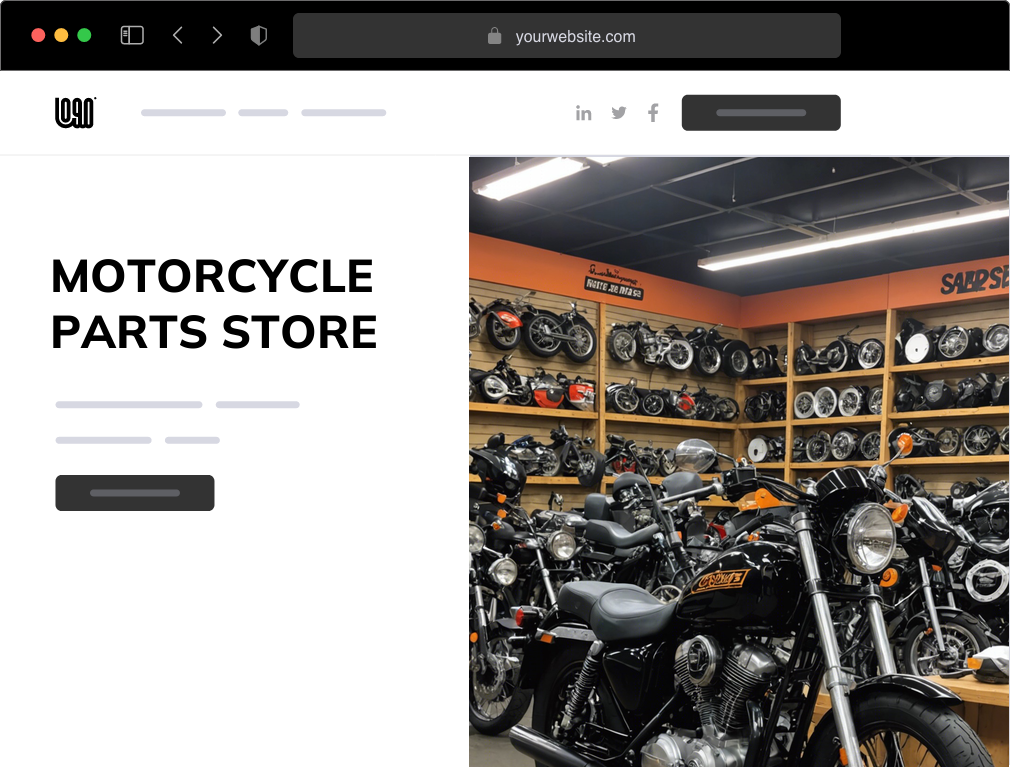Top MX Gear NZ: Prepare for Your Next Off-Road Adventure
A Thorough Consider Bike Components: What Every Biker Needs To Know
A comprehensive understanding of motorbike parts is not merely helpful but vital for any type of rider intending to make best use of efficiency and safety and security. Each component, from the engine's complex operations to the dependability of brake systems, plays a crucial function in the total experience and functionality of the bike.
Understanding the Engine
The engine, usually considered the heart of a motorbike, is a complicated assembly of components that operate in harmony to convert fuel into motion. At its core, the engine's main feature involves the combustion procedure, where air and fuel mix and ignite within the cyndrical tubes, causing regulated surges that drive the pistons. These pistons move up and down, converting chemical power into mechanical energy, which subsequently transforms the crankshaft, ultimately powering the bike.

Recognizing the ins and outs of a motorbike engine is vital for lovers and riders alike. It not just provides insight into how motorcycles accomplish their excellent power and rate but likewise aids in effective maintenance and troubleshooting, making certain long life and integrity when driving.
Suspension Solutions
While the engine powers the motorcycle, the suspension system plays a crucial function in making certain a regulated and smooth adventure. The shock absorber is in charge of absorbing shocks from the roadway surface area, maintaining tire contact, and supplying security throughout cornering and stopping. It makes up two major elements: the front forks and the back shock absorbers.
Front forks are normally telescopic, dampening and containing a spring mechanism. The spring prolongs and compresses to take in bumps, while the dampening system controls the motion to prevent too much jumping. This combination guarantees the front wheel remains touching the roadway, using superior handling and comfort.
The rear suspension, typically a monoshock or twin-shock setup, works in a similar way to the front suspension yet is customized to sustain the motorbike's weight and cyclist - motorbike shop. It handles rear wheel activity, adding to the bike's overall equilibrium and responsiveness
Shock absorber can be adjustable, permitting motorcyclists to adjust preload, compression, and rebound setups according to personal choices and riding problems. This adjustability improves efficiency by optimizing the motorcycle's interaction with diverse surfaces. In recap, a reliable shock absorber is critical for cyclist convenience, security, and the motorbike's taking care of prowess.
Brake Parts
Stopping power is a basic aspect of motorbike safety, and it rests on the efficiency of the brake elements. The primary aspects of a bike's stopping system include the brake pads, calipers, blades, and master cylinder. mx parts nz. Each of these parts plays a critical role in guaranteeing effective braking performance
Brake pads are important as they create the essential rubbing against the rotors to reduce or stop the motorbike. Constructed from products such as sintered steel or organic composites, the choice of brake pad product dramatically affects performance and longevity. Calipers, real estate the brake pads, apply pressure to the pads when the brake bar is involved, helping with call with the blades.
The blades, generally made from stainless steel or cast iron, are installed to the wheels and act as the surface area against which the brake pads press. Their layout, including size and density, influences heat dissipation and stopping power. The master cyndrical tube, connected to the brake bar, creates hydraulic stress sent via brake lines to the calipers, making sure constant stopping pressure.
Regular upkeep and assessment of these components are important for optimum efficiency, protecting against wear and ensuring cyclist security on the road.
Tire Fundamentals
Beyond preserving durable braking systems, making certain optimum tire performance is just as considerable for motorcycle safety and performance. Tires are the sole contact factor in between the road and the motorcycle, making their problem essential in dealing with, security, and general experience top quality.

Inspect the sidewall for the DOT (Department of Transportation) code to identify the tire's age. Investing interest in these tire basics not just this maximizes performance yet also substantially boosts riding security.
Electric Solutions
In the world of bike maintenance, the electric system plays a vital function in guaranteeing trusted performance and rider safety. This detailed network incorporates crucial components such as the battery, generator, starter motor, and wiring harness. Each element is essential for the smooth procedure of the motorbike, from ignition to lights and communication with various sensors.
The battery acts as the heart of the electric system, giving the necessary power to begin the engine and run accessories. On a regular basis inspecting the battery's voltage and terminals for rust is important to avoid unanticipated failures. The generator, on the other hand, charges the battery while the engine is running, making certain a continual power supply.
The starter electric motor is in charge of launching engine procedure, transforming electric energy into power. To keep it, motorcyclists ought to pay focus to any kind of unusual noises or difficulties during startup. The circuitry harness serves as the lorry's nervous system, connecting all electric parts. Guaranteeing that the cords are intact and free from damage is vital for making certain and stopping short circuits capability.
Conclusion

Stopping power is an essential aspect of motorcycle safety, and it pivots on the effectiveness of the brake components. The primary aspects of a motorcycle's stopping system Check This Out consist of the brake pads, calipers, blades, and master cylinder.Brake pads are important as they develop the necessary friction click site versus the blades to reduce down or stop the bike.Beyond keeping robust braking systems, making sure ideal tire performance is just as substantial for bike safety and security and performance.In the realm of motorcycle upkeep, the electrical system plays a crucial role in guaranteeing trusted efficiency and motorcyclist safety and security.